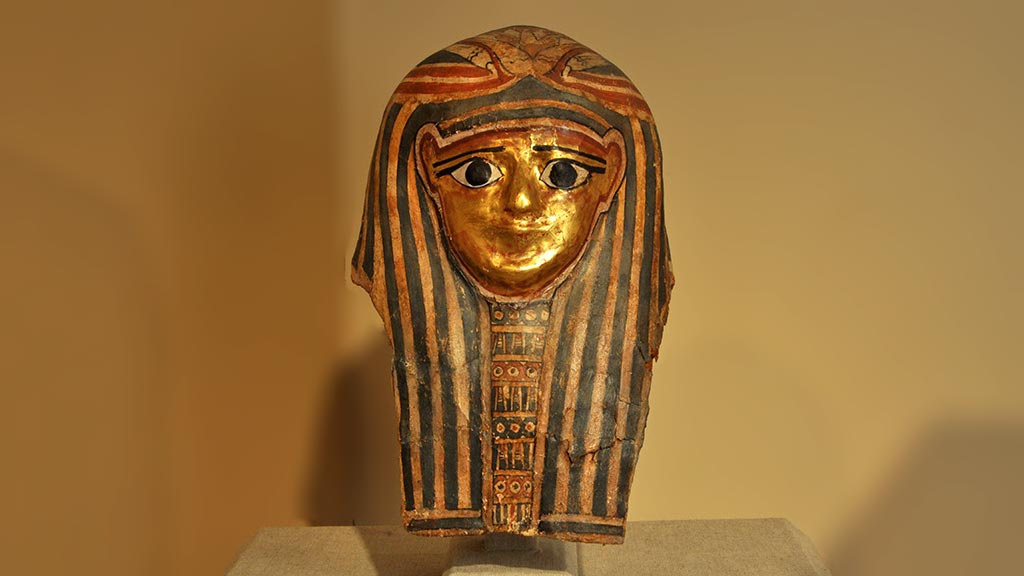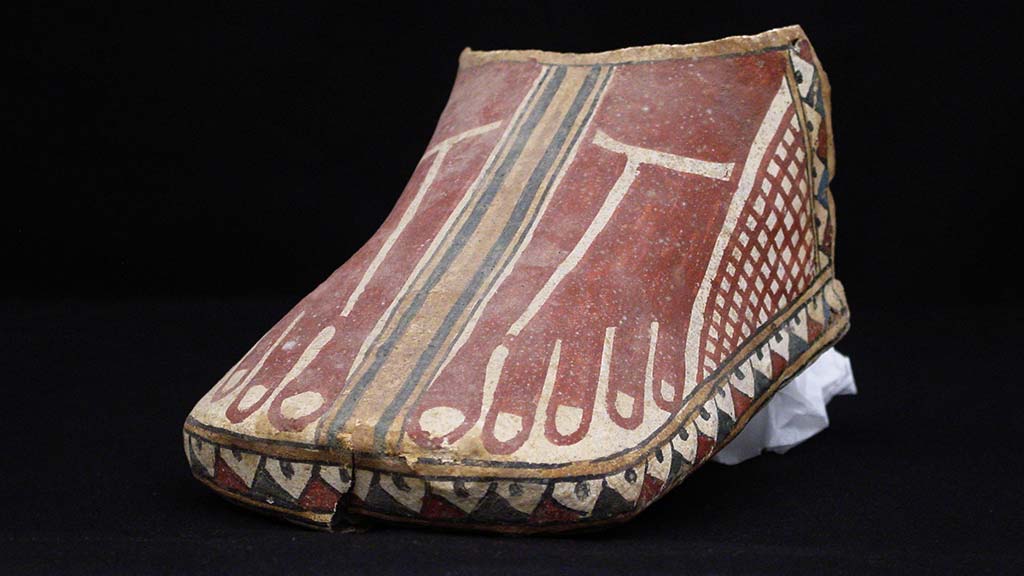Egyptian Mummification

Artifacts
Cartonnage Mummy Masks
Beginning in the Middle Kingdom, mummies could be provided with funerary masks that covered the head and shoulders. These masks were made of cartonnage, a material consisting of waste papyrus or linen soaked in plaster. Similar to papier-maché, cartonnage can be molded in three dimensions, so the masks could be carefully worked to closely resemble the bodies inside them.
Cartonnage is also easily painted, so the face and wig of the mummy could be reproduced. This would help the person's spirits to recognize and return to the body.
Over time, other items made of cartonnage were also wrapped in the mummy's bandages. These included pectorals, which covered the chest; aprons, which covered the lower torso and upper legs; and foot coverings. These items could be painted to resemble the body parts they covered, the jewelry the mummy would be wearing, or important religious symbols and scenes. By the time of the New Kingdom, cartonnage was being used for complete body cases.
"Turn your face to the west that you may illuminate the Two Lands with fine gold. Those who were asleep stand up to look at you; they breathe the air, they see your face like the shining of the sun-disc in its horizon, their hearts are at peace because of what you have done, for to you belong eternity and everlasting." Spell 15 - The Book of the Dead

